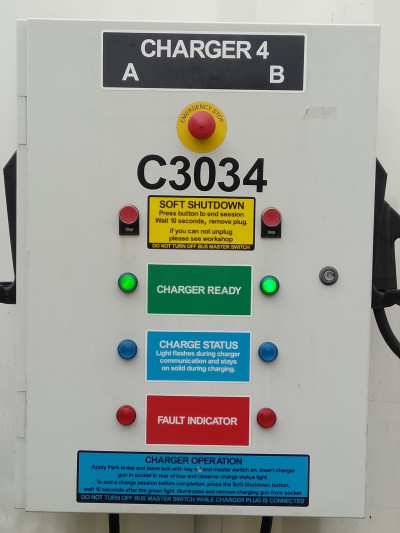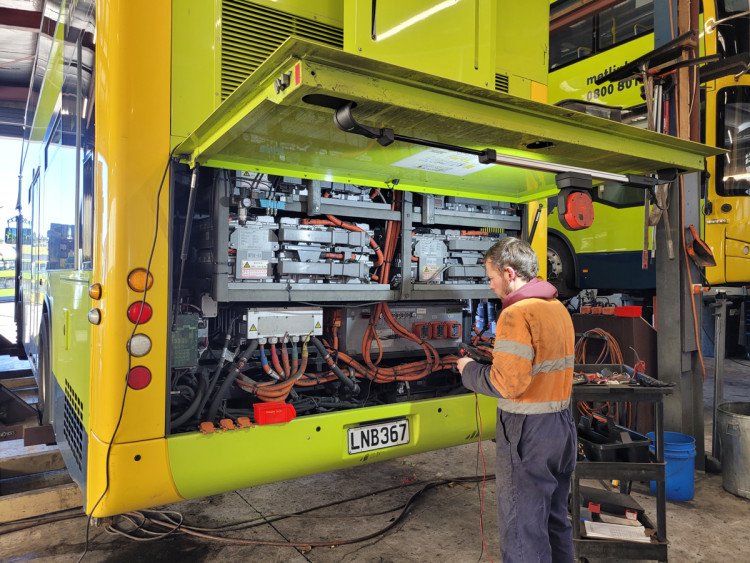Practices and processes that can be applied to maximise the safety of battery electric bus operation.
For a technical guide on the installing of electric vehicle charging equipment refer to:
WorkSafe Guidelines on Electric Vehicle (EV) Charging(external link)

Wall mounted connection with an emergency stop button. (Credit: Kirsten Boardman)
Battery fires, while less probable than combustion engine fires, can be catastrophic and require large volumes of water to extinguish. The highest risk time of battery fires is during charging and particularly fast charging.
To help manage this risk the Requirement for Urban Buses (RUB) therefore requires a fire suppression system for high-voltage battery compartments compliant with Australian Design Standard 5062-2006 or an equivalent internationally recognised standard.
Requirements for Urban Buses (the ‘RUB’)
Public transport authorities should require operators to develop and submit a fire mitigation plan to manage the risk of vehicle or battery fires. This plan should consider the specific characteristics of the depot and the fleet.
Some potential fire risk mitigation strategies include:
Fire safety measures and procedures for battery electric buses and depots is an evolving area of practice and may need to be fitted, or retrofitted, into depot design. At present, the industry has largely addressed the fire risk by incorporating early detection and protection protocols in battery management systems to prevent thermal runaway of damaged battery cells. This includes the use of the battery management system to monitor the battery’s voltage, current and temperature to automatically shut off charging should a fault be detected.
Battery electric buses also create additional considerations for first responders and recovery crews due to the potential for batteries to reignite for up to 24 hours after the initial fire has been put out. New training and accreditation for high voltage working is required for maintenance staff, as well as personal protective equipment and static-free tools.
Battery electric buses require less maintenance which enables a move from scheduled maintenance to a diagnostic maintenance schedule. In addition, battery electric buses are more reliable, which may translate to fewer maintenance bays needed and smaller spare fleet requirements.
Battery buses are generally heavier than diesel counterparts, new towing and recovery vehicles and processes may be needed. Another difference is that battery electric buses often have equipment located in the roof which requires more working at heights for maintenance staff.
With more electrical equipment, maintenance of battery electric buses is somewhat simplified. Many issues can be dealt with using laptops rather than in conventional maintenance bays.
Additional maintenance regimes, diagnostics and spares storage space may also be required for the fleet of chargers and dispensers at electric bus depots, in addition to buses.

Tranzit’s electric bus mechanic Thomas Nikolaison works on one of the company’s growing fleet of e-buses. (Source: Tranzit)